Du möchtest auch gerne die Bienen retten und eine Bee pasture or a Garten für Bienen anlegen? Die städtischen Grünflächen sind meist nur optisch schick gemacht, nehmen aber wenig Rücksicht auf die Tierwelt. Die Folge ist, dass wir heute vom großen Bienensterben sprechen. Umso wichtiger, dass du den Bienen mit deinem Garten einen idealen Lebensraum bietest. Aus diesem Grund wirst du jetzt in diesem Artikel lernen, wie du deinen Garten bienenfreundlich gestalten kannst.
Here is another short Table of contents for the article:
Why create a bee pasture garden?
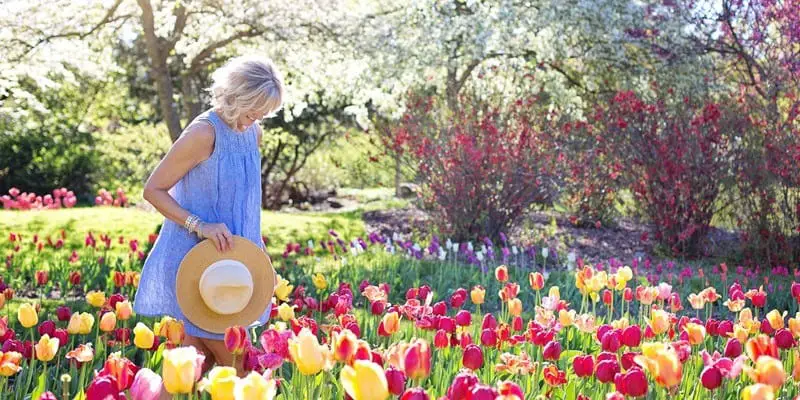
Wer einen Garten sein Eigen nennt, der darf sich glücklich schätzen, denn ein Garten eröffnet viele Möglichkeiten, nachhaltig zu leben – und das ganz direkt, without plastic waste und Umweltbelastung. Gemüse lässt sich selber ziehen, Obst lässt sich anbauen und es lassen sich auch Kräuter anpflanzen. Das erspart den Weg zum Supermarkt und vermeidet Müll. Ein Garten, sei er noch so klein, kann ein in sich geschlossenes kleines System sein. Ganz besonders bietet sich der eigene Garten daher zum Erhalt der Bienen an.
Der Kreislauf von Entstehen und Vergehen ist im Garten buchstäblich hautnah erlebbar. Der Klimawandel, Insektizide, monotone Agrarlandschaften und die Überzüchtung von Bienen sind Gründe dafür, dass wir aktuell vom großen Bienensterben sprechen. Und ohne die Bienen, würden auch wir große Probleme bekommen. Denn ungefähr 3000 Nutzpflanzen sind allein in Deutschland von der Bestäubung durch die Bienen abhängig. Unsere Nahrung würde knapper werden. Ein Grund mehr dafür, den eigenen Garten bienenfreundlich zu gestalten und etwas für den Umweltschutz zu tun.
Blühender Rasen im Garten für Bienen
Ein Garten besteht aus unterschiedlichen Bereichen. Du kannst dort Nutzpflanzen ziehen, bunt blühende Blumen anpflanzen und auch einen Create compost. Auch auf eine Rasenfläche musst du bei einem Garten für Bienen nicht verzichten.
Diese sieht in einem nachhaltigen Garten allerdings ein wenig anders aus. Sie ist, genauso wie die heimischen Gehölze und Stauden, ein kleines Biotop für sich und bietet Bienen und Insekten eine willkommene Insel, um sich auszuruhen und Nahrung aufzunehmen. Auch du kannst eine Gartenfläche in einen bienen- und insektenfreundlichen Garten verwandeln. Die nachfolgenden Tipps zeigen, wie du deinen Garten zum Lieblingsplatz für Bienen, Insekten und Schmetterlinge machst. Übrigens: Manche Tipps eignen sich auch für Balkon und Terrasse.
Making lawn a bee pasture
Um ohne großen Aufwand aus einer pikfeinen Rasenfläche eine Bienenweide zu machen und den Rasen bienenfreundlich zu gestalten, gibt es grundsätzlich zwei Wege:
- Do nothing – Eine handelsübliche Rasenmischung besteht im Prinzip aus einigen wenigen ausgewählten Kräutern und Gräsern. Durch den Schnitt wird die Ausbildung von Blütenständen unterdrückt. Hörst du auf zu schneiden, wachsen die Gräser und entwickeln ihre Blüten. Diese mögen optisch nicht so attraktiv sein, sind aber für Insekten eine Nahrungsquelle.
- Heimische Kräuter einsäen – Falls dein Rasen vermoost ist oder keine nennenswerten Blütenstände hervorbringt, kannst du der Natur ein wenig nachhelfen. Dazu eigenen sich viele heimische Kräuter, wie Thymian, Oregano oder Koriander. Du sammelst die Samen zum Beispiel am Wegesrand auf oder stattest dem örtlichen Blumenhandel einen Besuch ab. But you can also get the seeds online here for example*.
Damit eine Rasenfläche heimischen Kräutern als Standort dienen kann, muss der Boden mager sein. Mager heißt, dass der Anteil von Sand hoch ist, denn Sand hält keine Nährstoffe fest. Wenn du einen Naturrasen ganz neu anlegen willst, dann kannst du optimale Startbedingungen schaffen. In Fachkreisen ist vom Magerrasen die Rede. Mager heißt aber nicht Armut, im Gegenteil. Die Artenvielfalt ist das besondere Kennzeichen des Magerrasens. Er bietet unter anderem Wiesen-Salbei, Knabenkraut und der violetten Schwarzwurzel einen Lebensraum. Mit den vielen neuen Pflanzenarten halten auch die Insekten Einzug: Sandbiene, Zipfelfalter und Ölkäfer fühlen sich in einem Magerrasen wohl.
Lawn care in the garden friendly to bees
Damit die Artenvielfalt langfristig erhalten bleibt, ist Rasenmähen tabu. Dennoch solltest du die Pflege nicht vernachlässigen und dafür sorgen, dass die Beete und Strauchpflanzungen nicht verkrauten. Dazu sind Akku-Rasentrimmer gut geeignet. A handy lawn trimmer ist für kleine bis mittlere Flächen perfekt. Vor allem kannst du damit gezielt die Randbereiche kürzen und so die Ausbreitung der Gräser in die Beete verhindern. Zum anderen ist es mit einem praktischen Akku-Rasentrimmer einfach, den Aufwuchs unter Sträuchern niedrig zu halten, um den Gehölzen Luft und Licht zu verschaffen, die sie für gesundes Wachstum benötigen. Areale mit vielfältigen Kräutern und Wildstauden sind überlebenswichtig für Bienen, Schmetterlinge und Insekten.
Die besten Pflanzen für Bienen im Garten
Besonders in der Zeit von März bis September muss der bienenfreundliche Garten richtig blühen. Erst dann kannst du deinen Garten Bienenweide nennen. Bienen benötigen dafür eine große Vielfalt an Blüten heimischer Pflanzenarten. Grundsätzlich empfehlen sich für Bienen Pflanzen wie heimische Blütengehölze, Kreuzblütler, Wildstauen, Blumenwiesen und natürlich auch die klassischen Küchenkräuter. Welche Pflanzen für Bienen besonders geeignet sind, möchte ich dir nun etwas detaillierter zeigen.
Blütensträucher als Bienenweide
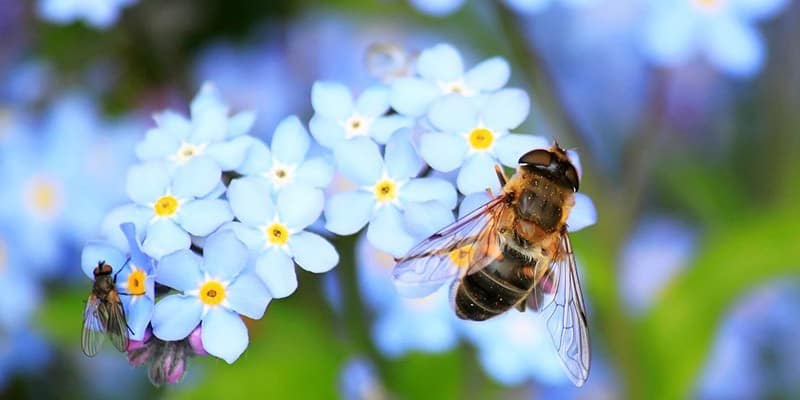
Wesentliche Akteure im Garten sind die Sträucher. In einem bienen- und insektenfreundlichen Garten sind heimische Blütensträucher unverzichtbar. Wenn du nicht weißt, welches Blütengehölz passt, dann hilft ein Besuch in der örtlichen Baumschule. Die Profis wissen genau, was du suchst, wenn du nach einem Bienennährgehölz fragst. In Fachkreisen ist das ein feststehender Begriff. Hier kommen ein paar der bekanntesten Bienennährgehölze, die du ins Freiland und zum Teil auch – zumindest vorübergehend – in einem Kübel auf dem Balkon platzieren kannst:
| Name | Blütenfarbe | Blütezeit | Geeignet für Kübel |
| Garden marshmallow | Weiß, Rosa, Blau | June - September | Yes, grows to a maximum height of 2 m |
| Potato rose/rosehip | Weiß, Rosa | Mai – September | Conditional, becomes very shaggy |
| Mayflower bush | Reinweiß | Mai – Juni | Ja, maximal 1 m, schnittverträglich |
Der Maiblumenstrauch gehört, wie die anderen beiden auch, zu den echten Leckerbissen für Bienen. Zudem sieht der Maiblumenstrauch mit seinen reinweißen Blütenrispen sehr attraktiv aus und ist eine Zierde für Balkon, Terrasse und natürlich den Garten. So machst du deinen Garten mehr und mehr zur Bienenweide.
Das praktische an bienenfreundlichen Blütensträuchern ist, dass sie wenig Pflege brauchen. Du pflanzt sie ein und schneidest sie selten. Der Vorteil ist, dass sie mit unterschiedlichen Standortbedingungen zurechtkommen und winterhart sind. Du solltest auf jeden Fall beim Gärtner nachfragen, wenn du unsicher bist, was Pflanzung und Pflege angeht.
Stauden für Bienen: der Blütenrausch im Blumenbeet
Nicht zuletzt kannst du mit Stauden ganz viel Platz für Bienen, Schmetterlinge und Insekten in deinem Garten oder auf deinem Balkon schaffen. Stauden sind klein, gut zu pflegen und sie bieten fast rund ums Jahr Nahrung für Bienen. Das Staudenbeet ist so etwas wie das El Dorado für Insekten und Schmetterlinge, denn hier befinden sich auf engstem Raum hunderte Blüten und Blätter, Fruchtstände, Kraut und Wurzeln. Beim renommierten NABU ist im Beitrag „Ein Garten für Schmetterlinge“ zu lesen, welche Stauden zu den Must-Haves gehören:
- Kartäusernelke
- Pigeon Kabiosis
- Tüpfeljohanniskraut
- Wild marjoram
Hier noch einige weitere Wildstauden, die dir dabei helfen, deinen Garten bienenfreundlich gestalten zu können: Heilziest, Taubnesseln, Ochsenauge, Schwarznessel oder Blutweiderich. Diese Pflanzen sind ideal für Bienen und damit auch für deinen Bienenweide Garten.
Klingt nach einem schönen, bunten Durcheinander auf Terrasse, Balkon und im Garten! Eigentlich ist es dann fast schon zu schade, den wunderbaren Garten zum Vacation zu verlassen, denn wenn das kleine Ökosystem ausgewogen funktioniert, gesund grünt und blüht, ist sein Anblick die beste Erholung.
Garten bienenfreundlich gestalten mit heimischen Kräutern
In the article Pflanzen & Kräuter selbst anpflanzen habe ich dir schon einmal wertvolle Pflanzen für deine Gesundheit gezeigt. Doch gerade die bei uns heimischen Kräuter sind nicht nur gut für dich, sondern auch für die Bienen. Deshalb solltest du Kräuter auch gern in deinem Garten anpflanzen, um deinen Garten bienenfreundlich gestalten zu können. Folgende Kräuter sind eine hervorragende Nahrungsquelle für Bienen und sollten in deinem Bienenweide Garten nicht fehlen:
- Oregano
- Lavender
- Dill
- Thyme
- Coriander
- Sage
- Lemon balm
- Rosemary
- Mint
- Marjoram
- …
Das sind bei weitem nicht alle Kräuter für Bienen, die du in deinem Garten anpflanzen kannst. Alle diese Pflanzen haben natürliche Blüten, die als Nahrungsquelle für Bienen dienen. Wenn du Bienen anlocken und ihnen eine Nahrungsquelle verschaffen willst, solltest du die Kräuter also nicht direkt ernten, sondern sie eine Zeit lang blühen lassen.
Nisthilfe für Bienen im Garten
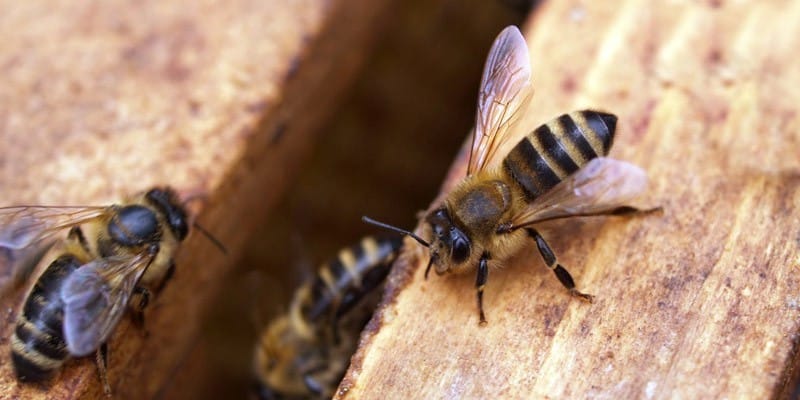
Wie sieht die ideale Nisthilfe für Bienen aus? Um diese Frage zu beantworten, müssen wir zunächst klären, wo sich Bienen besonders wohlfühlen und gerne einnisten. Ideale Bedingungen für den Bienen Nistplatz schaffen wir, indem wir folgende Dinge in unseren Garten haben:
- Rotten wood
- Sandige, offene Bodenflächen
- Trockenmauern und Steilwände
- Leere Schneckenhäuser
- Rocks & Pebbles
- Warme Hohlkörper
- Abgestorbene Bäume
- Markhaltige Stängel (z.B. Königskerze)
Grundsätzlich bevorzugen Insekten wie Bienen trockene und sonnige Plätze im Garten für ihren Nistplatz. Indem du diese Bedingungen schaffst, bietest du den Bienen einen idealen Lebensraum in deinem Bienenweide Garten.
Welches Baumaterial Bienen für ihr Nest nutzen
Unterschiedliche Bienenarten nutzen auch unterschiedliches Material für Ihre Nester. Grundsätzlich eignet sich aber das folgende Baumaterial für Bienen ideal:
- Small stones
- Clay
- Sand
- Earth
- Resin
- Plant parts
- Small wood chips (wood)
Die klassische Honigbiene und auch die Hummel bauen ihre Nester aus Wachs, dass sie aus ihren Wachsdrüsen am Hinterleib pressen. Bienen wie die Wollbiene, die Mauerbiene oder die Blattschneiderbiene nutzen besonders gerne Lehm, Sand, Erde, Pflanzenteile wie Blätter und auch Steichchen als Baumaterial für ihr Nest. Holzpartikel und das Mark von Pflanzenstängeln werden besonders bei Keulhornbienen und Holzbienen als Baumaterial bevorzugt.
Bee pasture garden? That's easy!
Du hast heute gelernt, wie du deinen Garten bienenfreundlich gestalten und den Bienen eine ideale Basis zur Fortpflanzung bieten kannst. Von den Gründen für einen bienenfreundlichen Garten, über die optimale Rasenfläche und die idealen Pflanzen für Bienen, bis hin zu den Nisthilfen und dem notwendigen Baumaterial. Ich hoffe, du kannst die Tipps nutzen, um deinen Garten bienenfreundlich zu gestalten. Hast du Fragen, Tipps oder Anregungen? Dann schreibe mir gern einen Kommentar unter diesen Artikel.
Best regards,

PS.: Jetzt weißt du, wie du deinen Garten bienenfreundlich gestalten kannst 🙂 Im Environmental protection blog von CareElite findest du noch viele weitere Tipps und Ideen, mit denen du etwas Gutes für die Umwelt tun kannst.

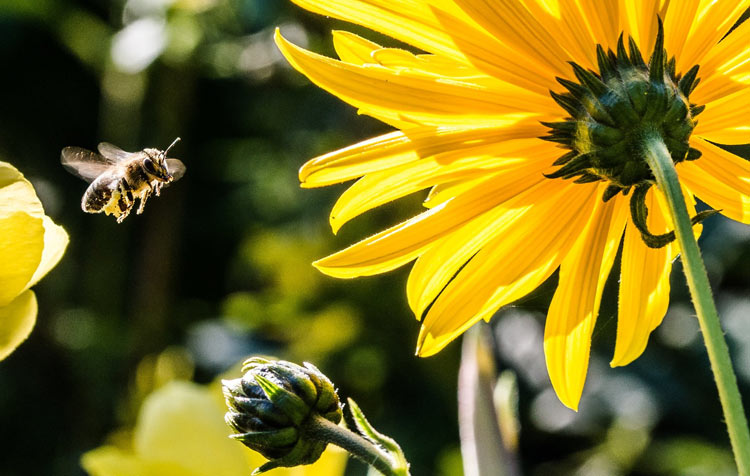

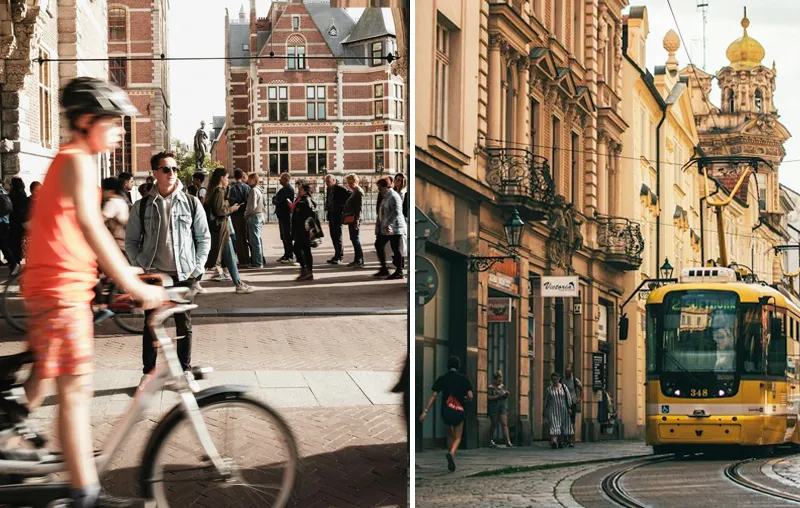


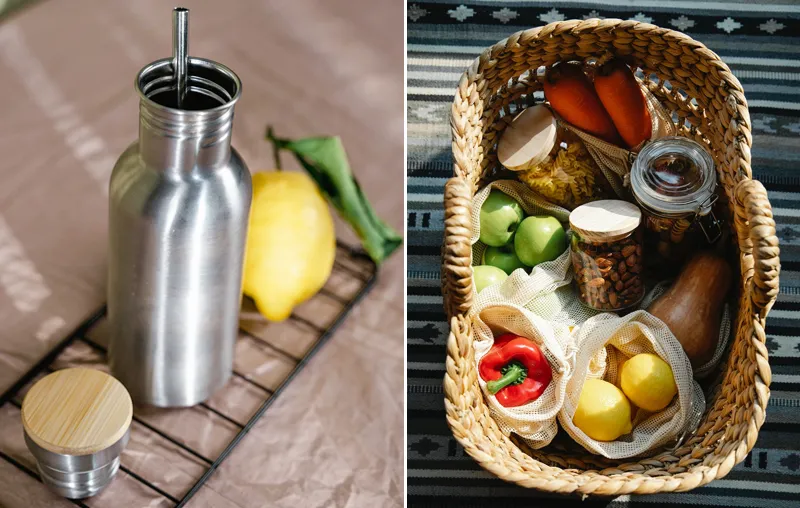
Hi Christoph, thanks for the informative article! It is really important that the gardens bees, other insects, butterflies and birds provide habitat and food! Because in the meantime, the food supply is becoming less and less due to sealed areas and chemicals on the fields... With the gardens we can set a counterpoint to this! That's why I have also created the link party natural garden design. There it is exactly about these topics! Maybe you feel like linking your post on Friday? So we could make all the more people aware of it.
Kind regards,
Amely
Hi Amely! Thank you for your lovely comment, I see it just like you 🙂 .
I'd love to, I'll be in touch.
Many greetings,
Christoph
Hello Christoph,
who has no garden, can be active on the balcony. Soon starts a so-called online congress on this, brought to life by a Berliner. Every day, 3 interviews with experts are unlocked for 24h free of charge. http://bio-balkon-kongress.com/ The focus here is on the edible, but as we all know, before the food comes the bloom and that benefits the insects!
In the city it is really cruel, green areas are mowed so often that nothing can come up at all, and thus there are fewer and fewer food sources. And privately, rock gardens rule. Time to change that!
Hi Tanja, a really cool idea and also so simple 🙂
I like to share. Many greetings, Christoph
Hello Christoph! Thanks for the great, easy to read post! Our front garden is at the moment raw area after we had to lay a Tranige at the house! In the process, a lot of sand has spread on the "lawn" (was already pretty neglected anyway)! Now I thought for a new lawn, whether English lawn or bee meadow, I have to remove the top layer! You mean but sandy soil is ideal! Do you think I can then really just throw out bee meadow seeds and leave it like that? In addition, I would as just read with you then plant beautiful shrubs and perennials! Thank you and best regards, Claudia
Hi Claudia! Great idea - so please ask the DIY professional again, I do not want to recommend anything wrong here. 🙂 Feel free to comment here and say how you did it in the end.
LG Christoph
Thanks for the post on bee friendly garden design. My cousin lives on the outskirts of town and would like to plan her garden online so that bees feel comfortable there. Good to know that 3000 crops in this country depend on pollination by bees.